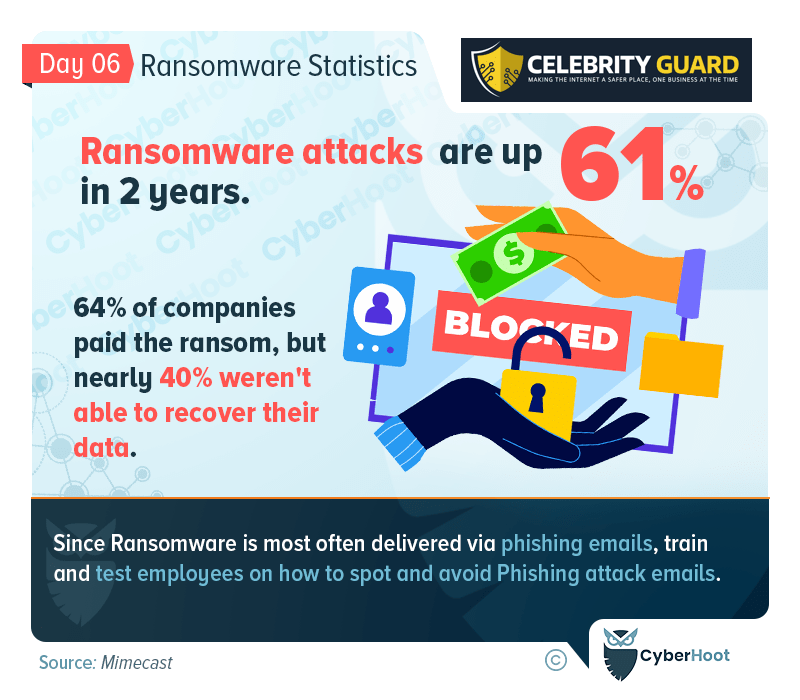Ransomware Statistics:
In an era dominated by digital transformation, businesses are increasingly reliant on technology to streamline operations, enhance productivity, and stay competitive. However, this dependence on technology also exposes organizations to cyber threats, with ransomware attacks being one of the most pervasive and financially crippling.

The threat landscape is evolving, and ransomware attacks continue to rise in frequency and sophistication. To appreciate the gravity of the situation, consider the following ransomware statistics:
- Global Impact:
- According to recent reports, ransomware attacks have become a global epidemic, affecting businesses of all sizes and industries.
- The global cost of ransomware damage is estimated to reach billions of dollars annually, factoring in ransoms paid, downtime, and recovery expenses.
- Increasing Frequency:
- Ransomware attacks are occurring more frequently than ever before, with a significant year-over-year increase.
- Small and medium-sized enterprises (SMEs) are increasingly becoming prime targets due to their often-limited cybersecurity measures.
- Diverse Targets:
- Ransomware attackers are versatile in their targets, hitting sectors ranging from healthcare and finance to manufacturing and education.
- Critical infrastructure, such as energy and transportation, is also at risk, posing potential threats to public safety.
- Sophistication of Attacks:
- Cybercriminals are deploying more sophisticated tactics, techniques, and procedures (TTPs) to bypass traditional security measures.
- Advanced ransomware strains use encryption algorithms that make data recovery challenging without paying the ransom.
The Cost-Effective Solution: Security Awareness Training
While investing in robust cybersecurity infrastructure is essential, an often overlooked but cost-effective solution is security awareness training. This proactive approach involves educating employees about cybersecurity best practices, recognizing phishing attempts, and understanding the potential consequences of ransomware attacks.
- Human Firewall:
- Employees are the first line of defense against ransomware attacks. Security awareness training empowers them to become a human firewall, identifying and thwarting potential threats before they can cause harm.
- Phishing Defense:
- Phishing remains a common entry point for ransomware attacks. Security awareness training teaches employees to recognize and avoid phishing emails, reducing the likelihood of falling victim to malicious campaigns.
- Crisis Response:
- In the event of a ransomware attack, trained employees can respond promptly and effectively. This includes reporting incidents, isolating affected systems, and minimizing the impact on business operations.
- Culture of Cybersecurity:
- Integrating security awareness into the corporate culture fosters a proactive cybersecurity mindset among employees. This ongoing commitment helps create a resilient organization capable of adapting to evolving cyber threats.
Conclusion:
Ransomware attacks pose a significant threat to businesses, both in terms of financial loss and operational disruption. While the cybersecurity landscape may seem daunting, implementing security awareness training is a cost-effective and powerful strategy to enhance your company’s defenses. By investing in the education and awareness of your workforce, you not only reduce the risk of falling victim to ransomware but also contribute to creating a robust and resilient organizational cybersecurity posture. Remember, an educated workforce is an organization’s best defense against the ever-growing threat of ransomware.